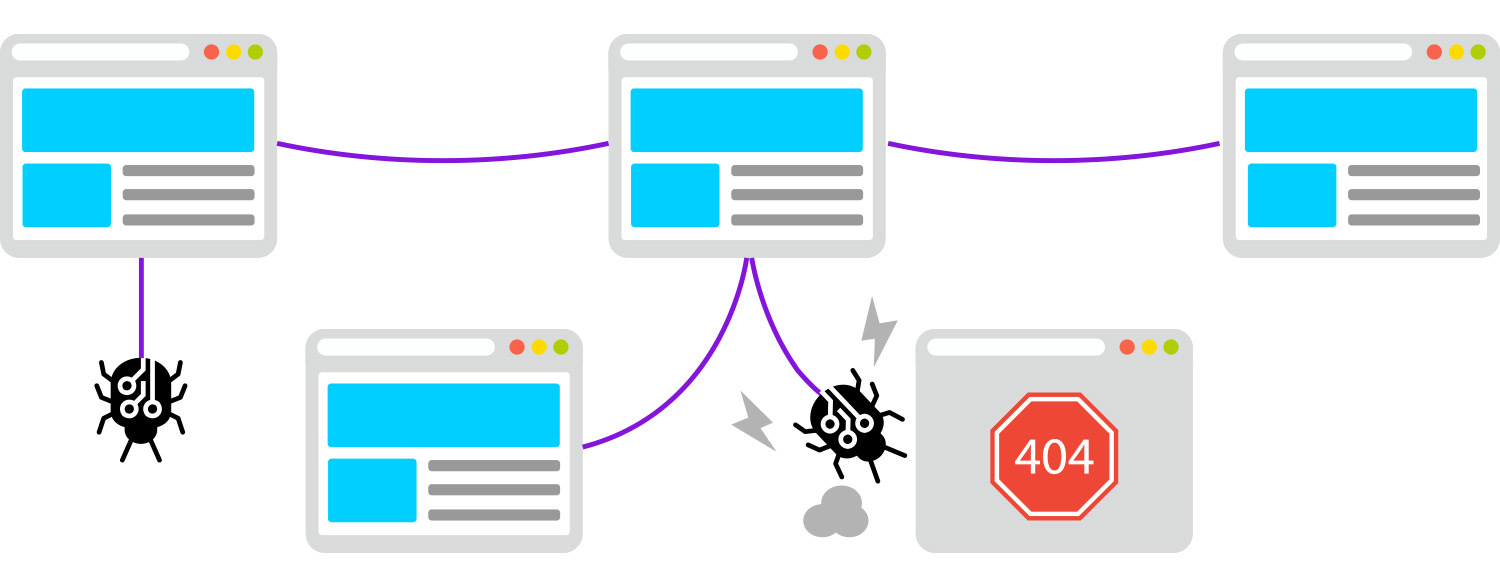The Covid pandemic has pushed eCommerce ahead of its trajectory by at least five years. In-store sales are down significantly and companies have been forced to reevaluate their business model. Crucial to this is to assess their current eCommerce platform to ensure it is adhering to best search engine and website usability practices. To help we have outlined some of the main areas you need to review.
Your Source Code
A well-coded website is essential in these competitive times giving you an edge over your competition. Conversely, search engines show no mercy for a poorly coded website, and it will effect your ranking on the search engine results. Poor coding includes: slow-loading pages, broken links, unoptimised images and responsive issues on mobile devices.
● Search engine bots: The standard of coding of your website will determine if your website can be easily crawled by search engine bots. An example of this would be 4XX errors that stop the search engine bots accessing certain content. 404 pages, for example, are caused by broken links and stop the bot’s access to the page’s URL. Users also will leave a site frustrated by these errors.

● Load time: A professional web developer understands the importance of optimisation as a crucial final stage in a development project. A website that is properly optimised will take less time to load, providing an efficient and streamlined user experience. The process of optimisation refers to HTML and PHP code while also the removal of redundant CSS files and Javascript. Faster page loads will improve your Google ranking and keep your audience engaged while on the site. Largest Contentful Paint (LCP) offers a way to measure how long a browser takes to render the largest text or image block in the viewport. Put simply, it estimates how soon users can see above-the-fold content. (LCP) is a core web vital factor in Google Search Console that relates to the page load time from a user’s point of view with 2.5 seconds being the recommended maximum page load time.
Keywords
Long-tail keywords Examples
Text Search: “Florist Trim Co Meath”
Voice Search: “What is the best Florist shop in Trim?”.
Using Keywords to enhance your SEO:
- Meta information/tags
- Headings (H1, H2, H3 etc)
- Text Content (paragraphs, lists & captions)
- Images ALT text
- Page URLs
- Social media accounts
- External links
Meta title Example:

Structuring Your URLs
Understanding site structure and how page URLs can fit within a hierarchy of topics is really important. SEO silos built with these hierarchies are easily navigated by both user and understood by search bots. When implemented correctly, SEO silos can greatly increase the range of keywords your site can rank for. This becomes vital when a company has a service or product range that is targeting diverse sectors. URLs need to relate closely to your targeted keywords to be effective within your overall SEO strategy. Hyphens can be used in place of spaces and help legibility, whereas forward slashes mark a further level down in the page hierarchy.
Google’s move to Mobile-First Indexing
Since March 2021, Google has implemented mobile-first indexing. This means that the Googlebots crawl index pages only with a smartphone agent, disregarding desktop-only websites. For this reason it is crucial to implement the same structured data, robots.txt, meta titles, and meta descriptions on both the mobile and desktop versions. Ensuring this is consistent will make your website bot-friendly and easily-accessible.
Optimizing Your Images
The size of your images contributes to the overall total page load. Large JPEGs will add to more data to load. Another common mistake is the unnecessary use of PNGs, which are bigger in size than JPEGS as they contain transparency layers. Any optimization that can be done will improve your PageSpeed. A handy tool for checking your page speed is tools.pingdom.coms. In addition, all images should have the correct meta tags as required by search engines and for accessibility.
Cross-Browser Compatibility
Your website needs to function the same on each of the main browsers, which are Chrome, Safari, Firefox, Edge, Opera, and Internet Explorer . The underlying engines differ in some cases and this means a particular feature may work perfectly on one and not on another. A good developer will test each browser using dedicated tools and will fine-tune any issues in order to ensure that the user experience is seamless across all of the main browsers. Achieving this will ensure that bounce rates are kept to their minimum.
Voice Search SEO
Voice search SEO is becoming increasingly important with the rise of AI Voice assist software such as Siri, Google Assist, and Alexa. It is predicted that 55% of all searches will be voice searches by 2022. In practice, a user will use different phrases and keywords when searching using their voice. Having a separate approach for these searches will give you the edge over your competitors. As ‘near me’ is a popular term used in voice search having your Local SEO optimised will help your ranking.
Structured Data Markup
Rich Snippets is the term used to describe structured data markup that can be added to existing HTML, adding additional information in the SERPS. This approach is particularly effective with eCommerce sites as structured data can be added to the products types. Most voice searches answers derive from Rich Answer Boxes shown at the top of results pages.
Unlock Your eCommerce Potential
The areas covered in this post will greatly enhance your eCommerce website’s performance and its ROI. Poor coding, bloated media files, incorrect page URLs, and not prioritizing mobile-first indexing could be detrimental to your business. Damn Good Digital’s SEO team performs SEO and Technical audits that identify such issues. One of our team would be happy to chat with you further in regard to this why not get in touch with us to explore your business’ potential today.
